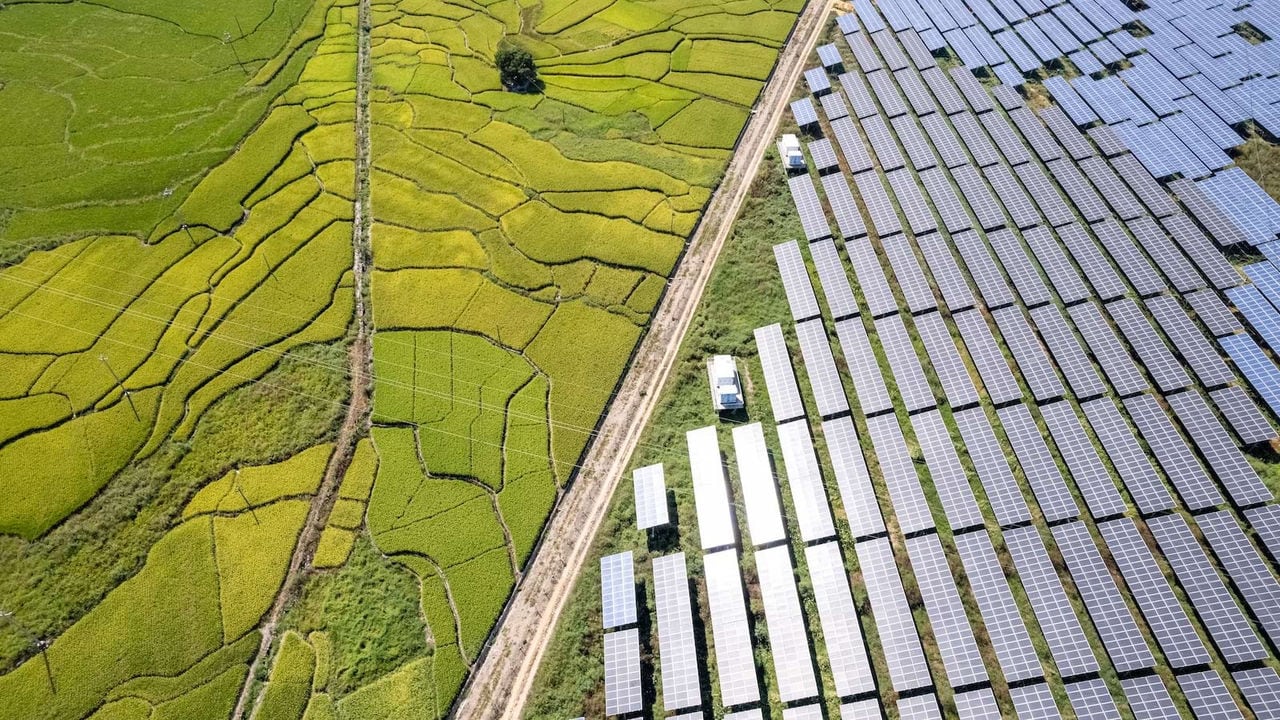The low-carbon energy transition is reshaping the way that companies power themselves—and the way they generate financial value. Advances in technology mean that companies now can radically drive down their energy intensity, secure affordable energy from low-carbon sources, achieve further efficiencies by electrifying operations and participate in energy markets. Taking action on energy demand in these ways lets businesses unlock savings, boost revenues, and protect against risks and rising costs, while improving sustainability performance.
Consider a few possibilities that recent PwC analysis has identified:
- A company in Southeast Asia found that making energy efficiency upgrades and installing solar panels, battery storage and electric vehicle (EV) charging across some 2,000 sites could lift its energy-related EBITDA by roughly 80%.
- Several top public companies in Australia’s consumer markets, technology and resources sectors could cut their energy-related operating expenses in half—or even eliminate these costs altogether—by revamping their approach to energy demand. They found they could achieve these savings by changing procurement strategies, installing onsite renewables and pursuing energy efficiency, among other actions.
- By implementing currently available technologies, companies worldwide could collectively reduce their energy intensity (energy used to produce a given output) by 31% and save US$2 trillion per year by 2030, according to research from the World Economic Forum (WEF) in collaboration with PwC.
Realising opportunities such as these does require changing the way that businesses operate. Here, we highlight the practical steps taken by those companies that are already gaining control over energy use. Through demand-side planning, execution and measurement, these leading companies are opening the door to a new—and profitable—ecosystem-based approach to energy management.
Planning your demand-side energy strategy
Many organisations would do well to think about energy demand first in terms of how to become more energy efficient—an approach that can yield significant financial benefits, as the aforementioned WEF research shows. Leading companies go further still, thinking about what they can gain from taking action on energy demand. And they concentrate staff and leadership attention on devising a comprehensive energy-demand programme that delivers both cost savings and added revenues, yielding a return on any necessary investments or operational changes.
Reposition energy demand as a multifaceted value driver
Energy efficiency makes up the foundation of sound strategies for energy-demand management. Changes such as installing more energy-efficient appliances, retrofitting buildings and employing software to optimise the use of equipment often pay for themselves quickly, while delivering meaningful emissions reductions. The evolution of the energy system also means that companies have other sorts of opportunities to create value from their energy demand.
These opportunities can take many forms. Some companies set up their own renewable generation and storage capacity, which secures an economical supply of energy and lets the company sell excess power to the grid. Or they make deals in which energy utilities pay them to curtail energy usage during periods of peak demand. In other words, they invest in managing energy demand with the aim of generating returns. And they also recognise that not taking action could expose them to regulatory or market risks, such as rising network charges (which result from greater investment in electricity grids) and carbon levies.
Defining these varied and unconventional approaches requires imagination. Giving managers a framework for contemplating value creation options can help them come up with a broader range of ideas.
Build an inventory of assets that can create energy value
A key step in creating value through demand-side action is developing a comprehensive inventory of suitable assets. Some assets are obviously energy-related: think of factory equipment or fleet vehicles. But other assets can generate energy value too. For instance, one global property fund rented its unoccupied rooftops to energy companies so they could put up solar panels. Companies can also help their big suppliers estimate the energy value of their assets, as a way to improve the cost and emissions profiles of the goods they purchase.
Taking stock of assets that can enable demand-side action may require lateral thinking, plus an understanding of how risks and value pools might evolve. A company that operates data centres may anticipate that its energy consumption will increase as customers transfer more storage and computing to the cloud. If it sets up renewable-power generation capacity to run the data centres, then it could offer incentives for its customers to perform energy-intensive computing processes, such as training AI models, at times when renewable generation is high.
In thinking about how various assets can create energy value, leading companies also account for green taxes and incentives. The EU’s Carbon Border Adjustment Mechanism, to take one example, will require buyers of certain goods imported to the EU to purchase certificates for emissions from the production of those goods. That is a further reason to pursue demand-side action in supply chains. At the same time, government incentives could ease the upfront cost of such action: one component of the US Inflation Reduction Act rewards companies that invest in renewable generation or energy storage.
Assemble a cross-functional team and secure leadership buy-in
Companies at the forefront of demand-side action set up cross-functional teams to plan and carry out their energy programmes. These teams’ key functions include operations and procurement, because improving efficiency and integrating renewables into a company’s energy mix often require changes or upgrades to processes, systems and supplier relationships. The finance function also has an important role to play in evaluating the costs and benefits of energy initiatives and in determining how to fund them. Together, these teams can help construct a demand-side action programme and build the business case for it.
Leadership backing also matters: energy-focused teams need support and funding to make the investments and operational changes that will deliver energy value. Companies that manage energy demand are well aware of this, so they assign a C-suite sponsor who can allocate capital to new investments, manage risk and navigate organisational challenges. Putting a chief financial officer, chief strategy officer or chief sustainability officer in charge of the energy programme can help ensure that projects get done in a matter of months rather than years. This is an area in which most businesses have a long way to go: in the recent WEF report, only 42% of executives said their company discussed energy intensity at the board level, compared with 82% of executives who said their company did so for emissions intensity.
Realising demand-side opportunities
Opportunities for demand-side action can span a company’s entire operations (as well as its value chain). They can also be technically demanding and costly to fund. Faced with such daunting complexity, leading companies try to maximise the benefits of their efforts by prioritising those demand-side initiatives that are closely aligned and by bringing in partners whose capabilities complement their own.
Manage energy demand at the portfolio level
Companies are finding they can reap compound benefits from demand-side action by prioritising complementary initiatives and building them into a portfolio, rather than pursuing single initiatives in a disconnected fashion. Installing remote sensors and controllers on equipment, for example, enables the company to dial its energy consumption up or down. This is best done along with the creation of an energy markets capability, so that the company can better match its energy consumption to fluctuations in power prices (in locations where energy market mechanisms make this possible). Realising such compound benefits is a matter of exploring all available demand-side approaches at once, across the entire inventory of assets. (For more analysis of the opportunities that can be created through demand-side action, see our previous article, ‘The energy-demand opportunity.’)
The experience of a large Australian city council shows the value of portfolio-wide execution. After initial planning to install renewable energy on land that it owned, the council began exploring ways to maximise the value of this approach. Analysis showed that adding energy storage would bolster the city’s energy resilience and allow it to generate revenues from sales of stored power. The council also evaluated the potential to install EV charging stations, which would support the build-out of its electric fleet, and considered other energy initiatives, such as implementing long-duration energy storage. By presenting these ideas as a unified plan with a net positive value, the council attracted the necessary financing.
Cultivate an ecosystem of partners
Companies often find they can create additional value from demand-side actions by partnering with others to create ‘implementation ecosystems.’ This approach helps companies access expertise they might lack on such specialised topics as supply and demand forecasting, distributed energy device connectivity and orchestration, scenario modelling, energy technologies such as virtual power plants, energy-system regulation, and tax credits and incentives. Indeed, PwC research shows that companies mastering ecosystem approaches are 1.6 times as likely as peers to gain competitive benefits, such as access to new customers.
Ecosystem approaches can also facilitate access to capital, particularly for companies that may be reluctant to finance investments on their own balance sheets. Global investment in the low-carbon energy transition surged by 17% to US$1.77 trillion in 2023, so well-prepared companies should be able to attract sufficient funds (BloombergNEF, Energy Transition Investment Trends 2024, January 2024). Through ecosystems, companies can tap the balance sheets of partners, pursue such options as blended finance (which brings together development capital and private investment) or secure government incentives.
Australia’s Community Energy Upgrades Fund, launched in early 2024, is spearheading one such effort to form an energy-demand ecosystem. Through this fund, the federal government jointly finances energy efficiency and electrification upgrades for local governments’ infrastructure projects. Another example is the connected energy ecosystem concept being developed by the nonprofit organisation Cricket for Climate. The idea is to help cricket clubs and local municipal councils collaborate with providers of energy services and financing on demand-side action, thereby generating cost savings and income streams that can be channelled back into sports programmes, along with positive environmental and social impact.
Identify core capabilities and build incrementally
Depending on which demand-side approaches a company elects to pursue, implementation may require specialised skills such as energy trading, energy monitoring and modelling. And even dedicated energy-procurement teams, of the sort often found at industrial companies, may lack these skills. Relying on service providers to close technical gaps can be effective—but experience suggests that businesses need certain in-house capabilities to initiate and carry out a demand-side programme.
In particular, leading companies establish a team—which sometimes consists of just a few people—with sufficient knowledge of energy markets and technologies to evaluate demand-side opportunities over multiple time horizons. This way, they can build a strong business case and update it as conditions change—often while building more of the in-house capabilities needed to run the programme themselves.
US-based home improvement retailer The Home Depot demonstrates this flexible, evolving approach. The company says it continually refreshes its thinking, analysis and assumptions as it optimises its energy demand and moves towards energy independence. Its numerous initiatives include the installation of in-store energy management systems, a transition to LED lighting in all its stores and a commitment to use rooftop fuel cells for storage.
Measuring demand-side progress
The third step required to enable progress on demand-side action is measurement—establishing performance indicators to gauge whether the company is advancing towards its goals for value creation and other outcomes. Until recently, much of the data that businesses might use to compare themselves with their peers has been narrow in scope (spanning individual countries or whole sectors) and out of date. But recent efforts to combine newer data sources are helping to close the data gap so that companies can better determine their standing.
Benchmark performance against peers
PwC has started building a demand-side action index that tracks individual companies’ progress in optimising energy demand, pursuing energy independence and electrifying operations. So far, this effort has looked at 100 large companies in each of several sectors.
Our early findings show a wide range of achievement and opportunity within four sectors, as well as significant divergence among sectors (largely explained by differences in business models).
Technology, media and telecommunications
Top-quartile TMT companies earn about US$23,600 or more in revenue per gigajoule (GJ) of energy consumed and derive 96% or more of their energy from electric power. By contrast, bottom-quartile companies earn US$2,500 or less in revenue per GJ, which suggests they could improve their energy efficiency considerably. And all TMT companies should have the opportunity to avoid price spikes, grid charges and outages by generating more of their own energy. Even at top-quartile performers, as little as 0.5% of the energy used is self-generated.
Consumer markets
Consumer markets companies in the top quartile deliver approximately US$6,300 or more in revenue per GJ of energy use (compared with about US$1,100 or less for the bottom quartile), largely because of energy efficiency initiatives for buildings. Converting to EV fleets has aided electrification at top-quartile companies: 65% or more of their energy comes from electricity (versus 20% or less for the bottom quartile). And top-quartile consumer markets businesses use the large footprints of stores and warehouses to deploy solar and battery assets, enabling them to self-generate more than 0.8% of their energy (bottom quartile: 0.05% or less).
Industrial manufacturing and automotive
Among IM&A companies, transportation needs, mass-production requirements, and reliance on heavy machinery and high-temperature processes generally result in high levels of energy intensity along with considerable room for demand-side action. Those in the top quartile get 63% or more of their energy in the form of electricity, against 25% or less for bottom-quartile peers. These top-quartile companies produce 1% or more of the energy they use, significantly more than the 0.07% or less produced by bottom-quartile companies.
Metals and mining
Companies in the metals and mining sector rely heavily on energy-intensive assets that run on fossil fuels. Top-quartile companies have made strides towards energy independence by diversifying into renewable energy and investing in large-scale generation and storage assets, and produce 3.3% or more of their own power (compared with 0.01% or less for bottom-quartile companies).
Where energy markets support demand-side action
From country to country, companies will find varying levels of opportunity to participate in energy markets—whether by trading energy, joining demand-response programmes, exporting solar power, configuring virtual power plants or taking some other action. To help business leaders understand their options, we analysed the energy markets of 20 major economies and scored them in terms of the availability and maturity of eight key mechanisms that support demand-side participation (including mechanisms for renewables feed-in tariffs, power purchase agreements and ancillary services). Ten of these energy markets have seven or more mechanisms in place, which suggests that companies may wish to engage in energy markets there first. Another six energy markets have five or six mechanisms in place; these could also emerge as energy markets that accommodate demand-side participation by companies.
The task ahead
The energy transition isn’t just a supply-side shift to renewables. Progress is also underway on the demand side, as companies recognise that they can lower their costs and lift their revenues by managing their energy use more deliberately. Working on efficiency typically pays off for these companies, and current technologies give them plenty of efficiency-boosting options. Still more value can come from other initiatives, such as installing onsite renewables, switching to electric equipment and participating in energy markets. The task before executives is to reframe energy as a value driver for their business and to ensure that sufficient attention and resources go to planning demand-side action, making the necessary changes and investments, and tracking results. With a comprehensive, forward-looking programme, businesses can realise the full value of the energy-demand opportunity.
The authors wish to thank Emma Cox, Paul Nillesen, Evelyn Loveband, Daniel McKenzie, James Loughridge and Alwine de Vos van Steenwijk for their contributions to this article.
The energy-demand opportunity
How companies can thrive in the energy transition.
Solving the energy trilemma
Transform your energy demand and turn costs, carbon emissions and supply uncertainty into opportunities.

















